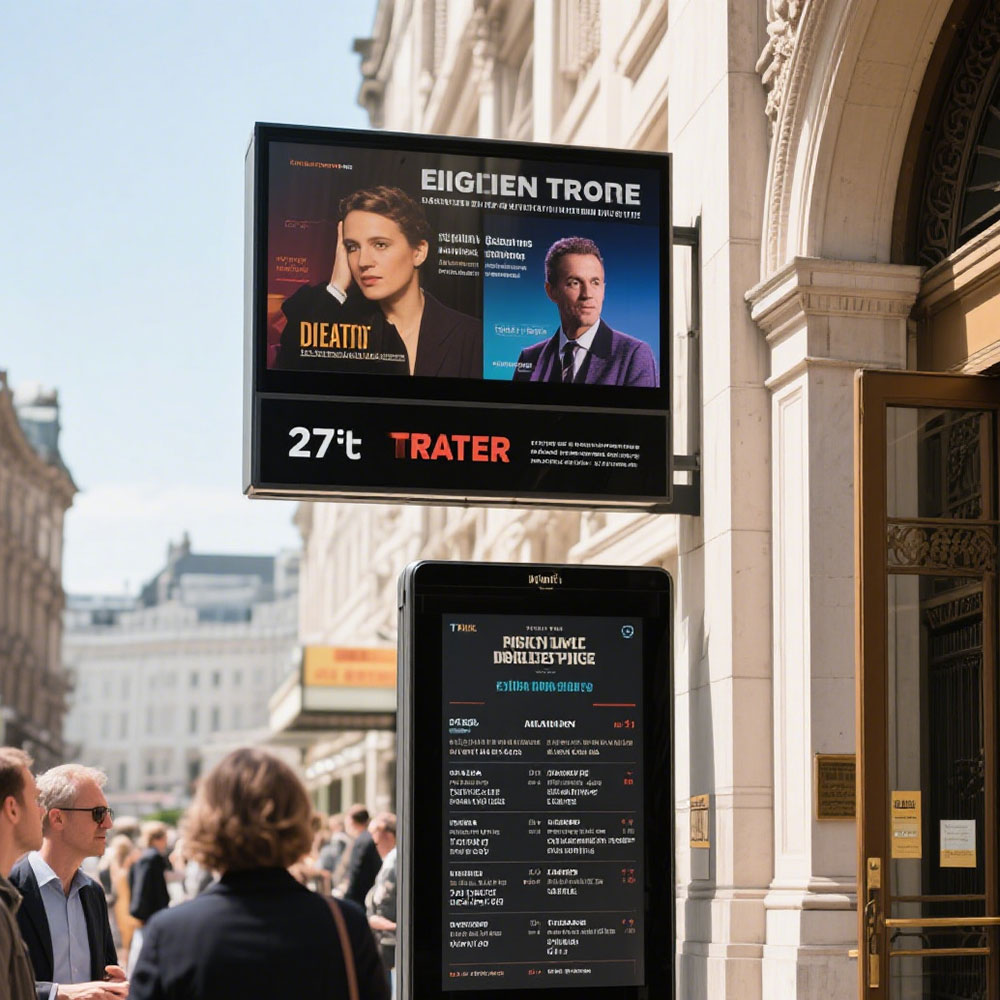When deploying outdoor LCD screens for advertising, digital signage, or public information displays, brightness is not just a number—it’s a critical factor that determines visibility, energy efficiency, and long-term reliability. According to the International Electrotechnical Commission (IEC) standard IEC 62305-1, outdoor displays must maintain minimum luminance levels of at least 5,000 nits under direct sunlight conditions to ensure readability in real-world environments. However, many manufacturers quote peak brightness figures without clarifying ambient lighting scenarios—this often leads to misleading expectations.
Understanding ANSI vs. Nits: Why It Matters

The term “nit” (cd/m²) is the standard unit for measuring display brightness. In contrast, ANSI lumens are typically used for projectors—not LCDs. Confusing these units can result in misjudging screen performance. For example, a 7,000-nit display from a reputable brand like LG or Samsung will outperform a 7,000 ANSI-lumen projector in daylight due to directional light output and contrast optimization. Always verify specifications using nits when evaluating outdoor LCDs.

Real-World Testing Across Climates
A 2023 study by the Society for Information Display (SID) tested 12 outdoor LCD models across three climate zones: tropical (Singapore), arid (Phoenix, Arizona), and temperate (Berlin). Results showed that only 4 models maintained consistent brightness above 5,000 nits under full sun, even with automatic brightness adjustment enabled. Models lacking thermal management systems experienced up to 25% brightness degradation within 90 days—a key reason why industrial-grade heat dissipation solutions (like active cooling fans and aluminum heatsinks) are non-negotiable for commercial deployments.
Energy Efficiency and Brightness Trade-offs
High-brightness screens consume more power, but modern LED-backlit panels now offer adaptive brightness control based on ambient light sensors (ALS). A case study from a Tokyo subway station revealed that implementing dynamic brightness adjustment reduced annual electricity costs by 32%, while maintaining 5,000+ nits during peak sunlight hours. This aligns with Energy Star 3.0 standards for commercial displays, proving that smart brightness management improves both sustainability and ROI.
Choosing the Right Brightness for Your Application
- General outdoor use (e.g., retail, parking lots): 5,000–7,000 nits
- Harsh sunlight areas (e.g., deserts, coastal regions): 8,000–10,000 nits
- High-security environments (e.g., airports, military): 10,000+ nits
Always prioritize certifications like IP65 (dust/water resistance) and IK10 (impact protection) alongside brightness specs to ensure durability. Relying solely on brightness numbers without considering environmental resilience risks premature failure—even if the screen initially meets brightness targets.
In conclusion, selecting an outdoor LCD requires balancing technical standards, real-world performance data, and application-specific needs. Don’t be swayed by marketing claims—validate brightness under actual conditions, test thermal behavior, and choose equipment built for longevity, not just initial specs.







